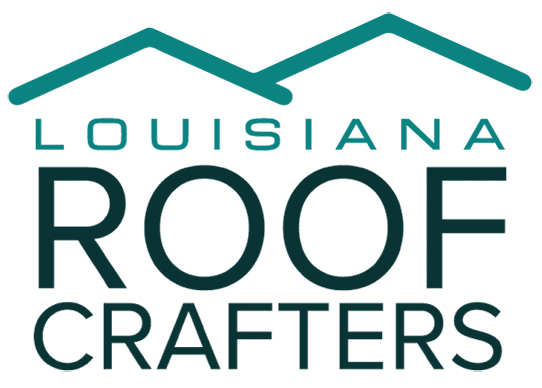A Complete Guide to Roof Insulation Types and Benefits from Louisiana Roof Crafters. Roof insulation is a critical component in any building’s construction, offering a barrier against heat loss and gain, enhancing energy efficiency, and improving indoor comfort. It can significantly affect the heating and cooling costs of a home and contribute to a sustainable environment. This comprehensive guide will explore the various types of roof insulation and their benefits, helping homeowners and builders make informed decisions.

Understanding Roof Insulation
Insulation in the roof is crucial for maintaining a stable indoor temperature by reducing heat flow. The effectiveness of insulation is measured in R-values — the higher the R-value, the better the material’s insulating properties.
Types of Roof Insulation
- Blanket Insulation (Batts and Rolls):
Materials: Fiberglass, mineral wool, plastic fibers, natural fibers
Application: Typically used in attics between joists, rafters, and beams
Pros: Relatively inexpensive and easy to install for standard spacing
Cons: Requires precise installation, gaps can significantly reduce effectiveness
- Loose-Fill and Blown-In Insulation:
Materials: Fiberglass, cellulose, mineral (rock or slag) wool
Application: Ideal for irregularly shaped areas and around obstructions
Pros: Good for adding insulation to existing finished areas or irregular spaces
Cons: Can settle over time, reducing effectiveness; requires professional installation
- Rigid Foam Board Insulation:
Materials: Polystyrene, polyisocyanurate, polyurethane
Application: Suitable for flat roofs and can be used for both new and retrofit construction
Pros: High insulating value for relatively little thickness
Cons: Can be more expensive; requires covering with weatherproof facing
- Spray Foam Insulation:
Materials: Spray polyurethane foam (SPF)
Application: Applied as a liquid that expands and hardens into a solid foam
Pros: Provides air sealing; high R-value; good for spaces that are difficult to insulate with other methods
Cons: Typically more expensive; requires professional installation
- Structural Insulated Panels (SIPs):
Materials: Foam board or liquid foam insulation core sandwiched between two structural facings
Application: Used in roofs, walls, and floors for new construction
Pros: High energy efficiency; strong and airtight
Cons: More expensive; must be carefully installed to avoid thermal bridging
- Reflective Insulation and Radiant Barriers:
Materials: Reflective aluminum foils with a variety of backings, such as kraft paper, plastic film, polyethylene bubbles, or cardboard
Application: Usually installed in attics to reduce summer heat gain and decrease cooling costs
Pros: Reduces radiant heat transfer; useful in hot climates
Cons: Less effective for insulating against cold
Benefits of Roof Insulation
- Improved Energy Efficiency:
Proper insulation reduces the heat exchange between your home and the outside environment, leading to less energy required for heating or cooling.
- Enhanced Comfort:
Insulation maintains a consistent temperature throughout the home, eliminating cold spots and reducing the strain on heating and cooling systems.
- Reduced Noise:
Many types of insulation also absorb sound, reducing the impact of external noise and making the interior quieter.
- Lower Utility Bills:
By maintaining a stable temperature, insulation reduces the need for heating and cooling, which can lead to significant savings on utility bills.
- Environmental Impact:
Reducing energy consumption lowers greenhouse gas emissions, contributing to a healthier environment.
- Increased Home Value:
Energy-efficient homes with high-quality insulation are more attractive to buyers, potentially increasing the home value.
Considerations for Choosing Roof Insulation
- Climate:
Select insulation material based on the climate you live in. Some materials may be more suited to cold climates, while others are better for hot climates.
- R-Value Needs:
Higher R-values mean better insulating properties. Determine the recommended R-value for your area and ensure the insulation meets or exceeds this value.
- Budget:
Consider both the upfront costs and long-term savings of different insulation types. More expensive options may offer greater energy savings over time.
- Installation:
Some insulation types require professional installation, while others might be suitable for DIY projects. Consider the complexity of installation and whether it aligns with your skills and safety standards.
- Building Regulations:
Check local building codes and regulations to ensure your insulation choice meets all requirements, particularly in terms of fire safety and R-value.
- Ventilation:
Ensure that insulation does not block roof ventilation, as proper ventilation is necessary to prevent moisture accumulation and maintain roofing materials’ longevity.
Conclusion
Roof insulation is a critical component of any home’s energy efficiency and comfort. With various types of insulation available, homeowners and builders can choose the best option to suit their needs, budget, and climate. Investing in proper roof insulation not only leads to immediate benefits in comfort and energy savings but also contributes to the long-term value and sustainability of the property. By understanding the different insulation types and their benefits, you can make an informed decision that will keep your home comfortable, quiet, and efficient for years to come.
Call Louisiana Roof Crafters at 225-238-6396 for more information. We service areas in Baton Rouge, Denham Springs, Hammond, Covington, Mandeville, Slidell, and New Orleans, LA.




